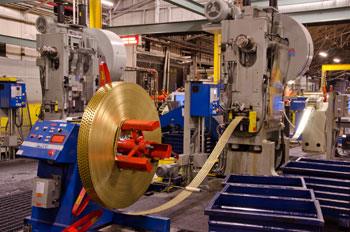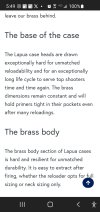MagnumManiac
Well-Known Member
I do not believe that for a second…that rupture occurred right where the case is turned for the extractor groove and where the extrusion occurs in the first punching of the cup.Well, its been ruled as my fault. I am not disbelieving the notion, but I am surprised that a few thou stretching on 1X fired case causes the rupture.
Have seen this once before, the case let go right at the extractor groove cut…no stretching occurs there from firing…ever!
When I worked at ADI, we would get the cups from different lots of brass sheet, sometimes, the annealing wasn't enough and the cups would crack right at where the cases web would end. These would never see the light of day, but maybe, just maybe, one got through…
I have some of these somewhere, for 7.62 NATO brass, will post a pic when I find one.
Cheers.


